Part one of a two-piece article.
From the start, those sceptical of lockdowns for managing the coronavirus pandemic have offered three complementary lines of argument. First, a respiratory virus will never be eradicated and as it becomes endemic, the public health goal should be to protect against severe illness. Second, we said science and experience showed that lockdowns might work as a temporary measure to delay the spread and ‘flatten the curve’, but cannot contain or avoid the disease indefinitely. Third, they produce collateral harms that accumulate as lockdowns persist and will afflict societies for years and decades to come.
The first is becoming clear around the world, the second is being experienced in Australia and the third is starting to show up here and elsewhere. Yet for some incomprehensible reason, governments have focussed single-mindedly on avoiding Covid deaths on their watch even while oblivious to short and long-term deaths caused by harsh society-wide shutdowns. To paraphrase one of George Orwell’s most-quoted sentences, all deaths are equal, but a Covid death is more equal than all others.
By now there’s a wealth of studies establishing the ineffectiveness of lockdowns, many of which I have referenced in earlier articles in The Spectator Australia, and some that purport to show their effectiveness. Writing in our British parent publication, statistician Professor Simon Wood showed that new infections peaked and fell before lockdown on all three occasions in England.
The indifferent results of lockdowns can be seen in Figure 1 that charts the Covid-19 deaths per million people (DPM) of several countries from around the world. While non-lockdown Brazil is at the higher end of the scale, Sweden is in the middle of the European pack (24/48) with a sub-European mortality rate. The same pattern can be seen with US states (Figure 2), where Texas and Florida have the 25th and 26th highest DPM of 50 US states, below the national average, but South Dakota ranks 10th.
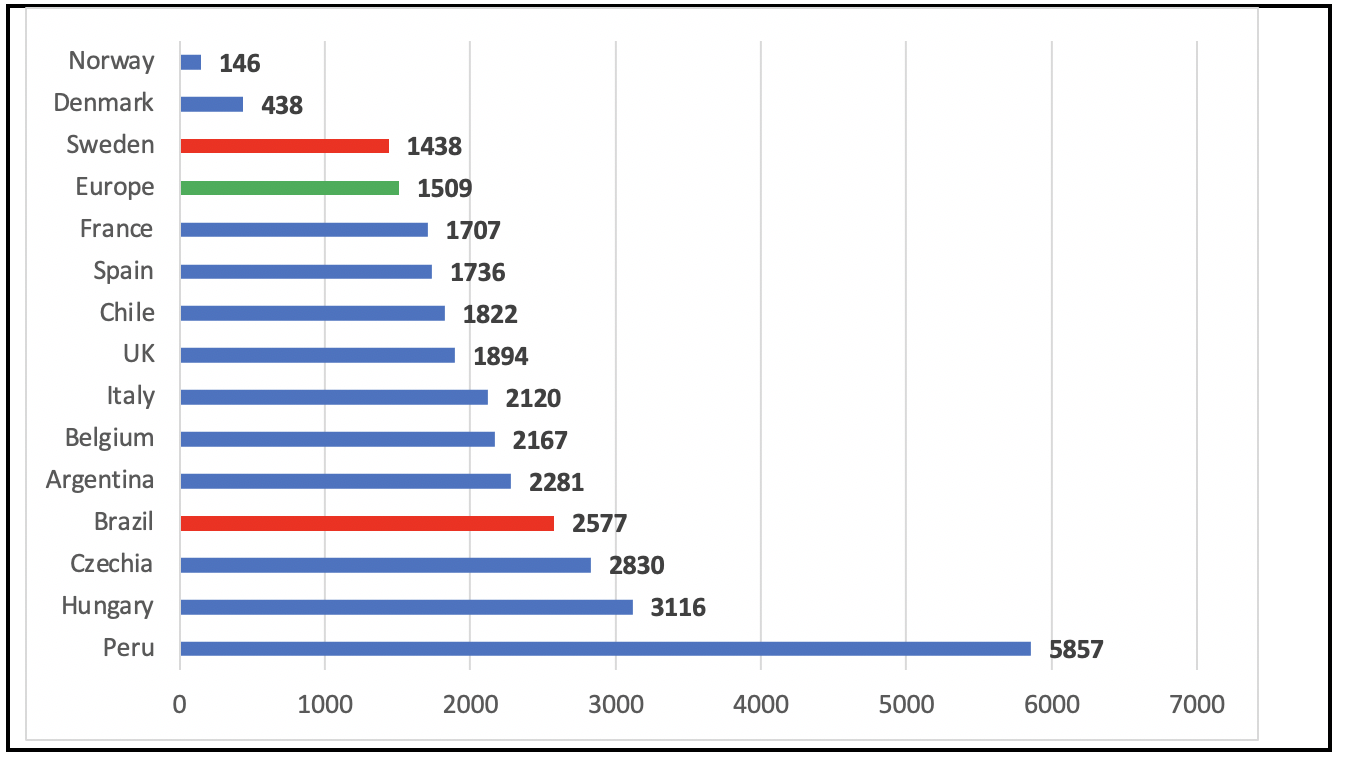
Figure 1: Covid-19 deaths per million people, selected countries, 25.7.2021
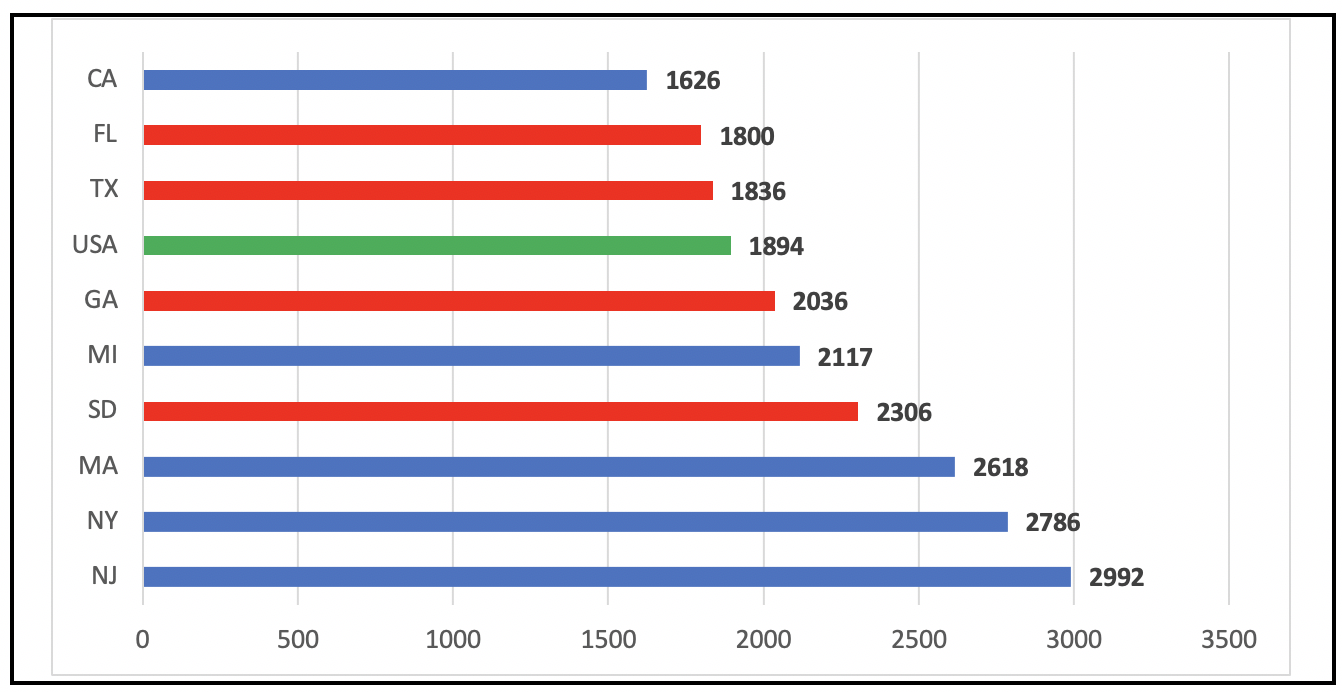
Figure 2: Covid-19 deaths per million people, selected US states, 25.7.2021. Figures 1 and 2 drawn on basis of data from Worldometers.
Figure 3 demonstrates yet again, for the umpteenth time, the policy invariance of the coronavirus curve. The virus follows its own inner logic and trajectory irrespective of the policy interventions by governments.
As is well-known but hushed in a conspiracy of silence by the mainstream media, Florida, Georgia and Texas – The States That Must Never Be Named – lifted all restrictions and, despite model-based grim warnings of becoming death traps, suffered no visible exit waves. The ripples of new cases of the Delta variant in these states follow the same curves as those in states with restrictions. Florida Governor Ron DeSantis is holding firm, insisting that ‘We’re going to lift people up. We’re not locking people down’. Are any Australian leaders listening?
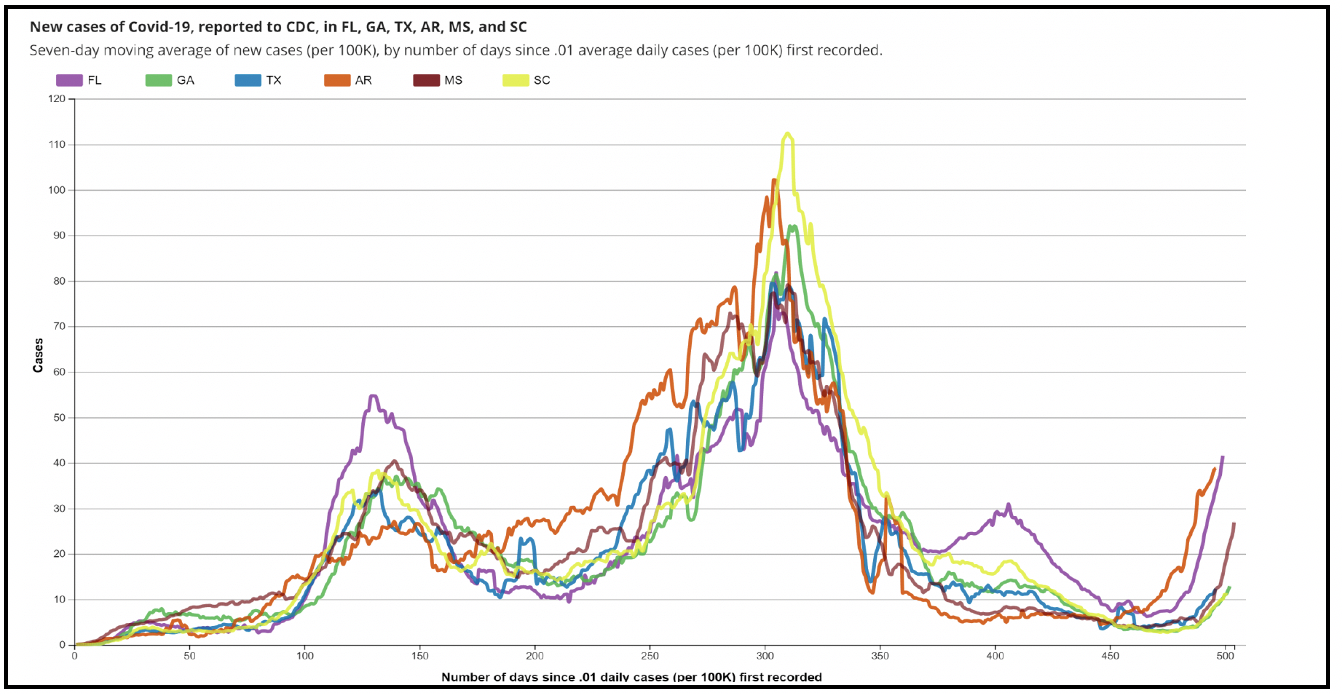
Figure 3: New Covid cases in selected US states. Source: Will Jones in Daily Sceptic, 23 July 2021.
The worldwide Covid deaths in the eight months from 1 March to 31 October 2020 were 1,279,085. In the next eight months from 1 November 2020 to 30 June 2021, the total was 2,678,166. That is, there were more than double the number of Covid-related deaths in the second eight months, when most of Europe, North America and South America – the three continents with the most severe outbreaks of the disease – were implementing hard lockdowns, than in the first eight months (Figure 4). This is not evidence in support of the effectiveness of lockdown interventions.
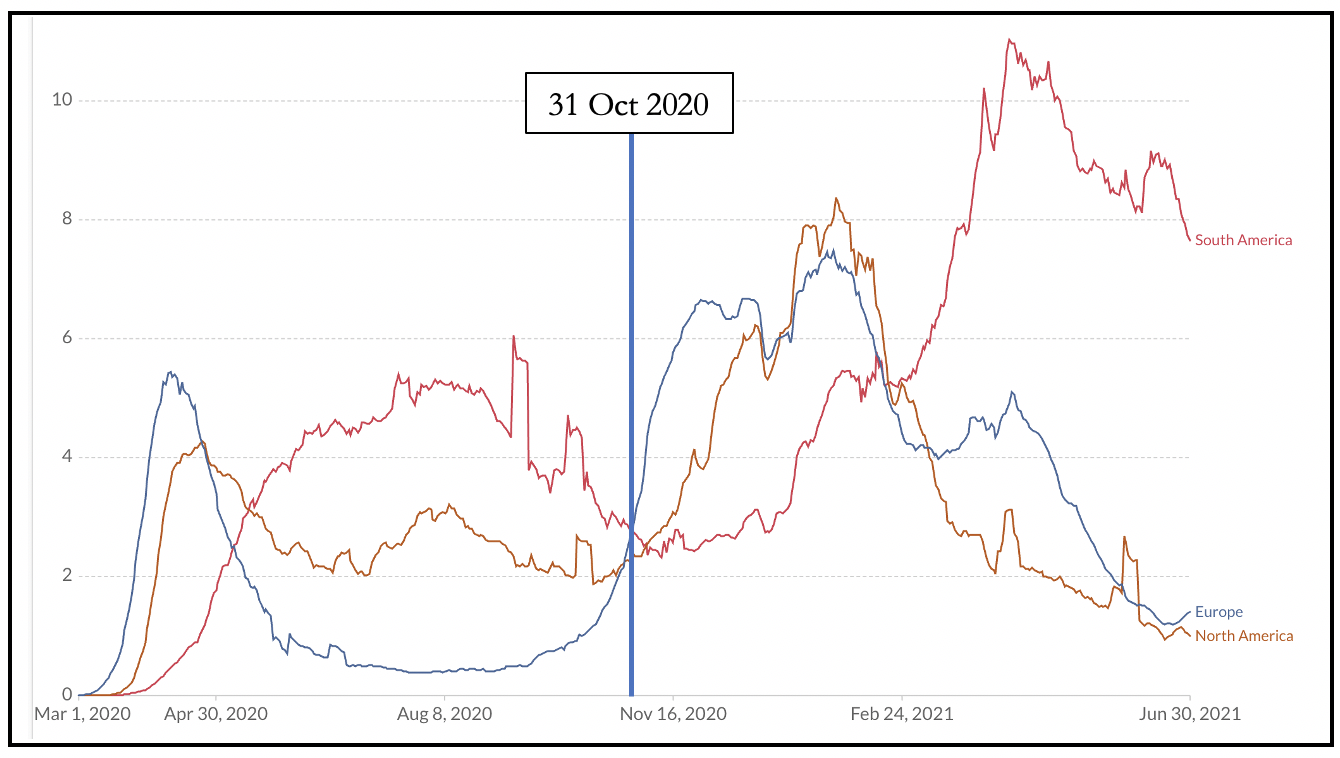
Figure 4: Deaths per million, Europe & Americas, 1 March 2020–30 June 2021. Source: Our World in Data.
There is no question that Covid-19 has exacted a terrible toll for 18 months and counting, even with the caveat of not distinguishing dying with and from Covid. The number of deaths from all causes worldwide was 59.23mn in 2020. For the pandemic period from 1 March 2020 to 26 July 2021, it was 93.7mn.
However, as Figure 5 shows, Covid is not the only and not even the world’s leading killer in that period. Five others have killed more people, and some of these other tolls were worsened with attention, resources and health services redirected to deal with Covid. Western governments behaved in herd-like fashion to repurpose the existing health system to focus disproportionately on Covid to the neglect of all other illnesses, including the big killer diseases. But they proved curiously reluctant to promote repurposed existing drugs for outpatient and early treatment of Covid.
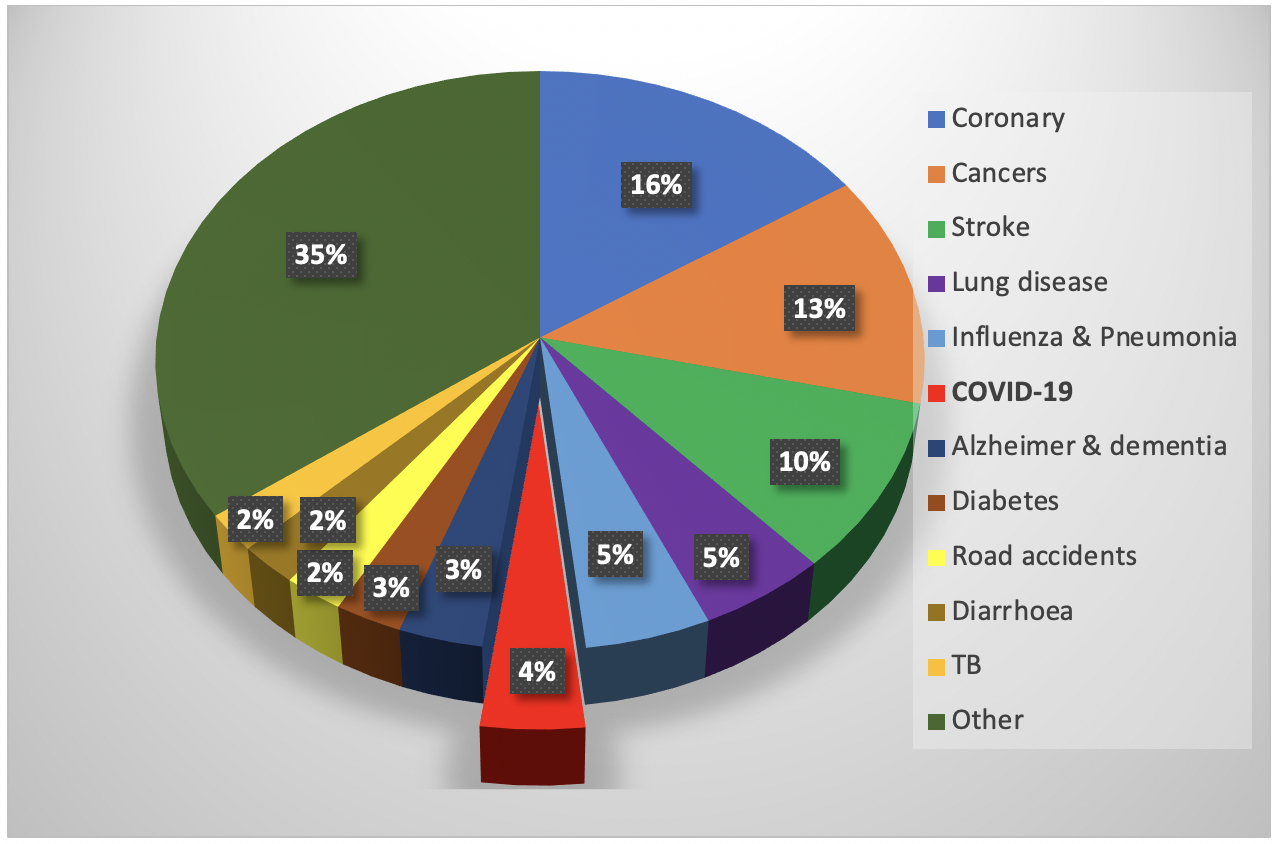
Figure 5: Leading causes of deaths in world, 1 March 2020–26 July 2021. Drawn from data at World Life Expectancy.
In the UK, owing to lockdowns, three million cancer screenings were missed, heart attack and accident and emergency attendances dropped by 50 per cent and emergency heart surgery dropped by 38 per cent in London in the second half of March. Around 5.3 million people are awaiting routine operations. Up to 60,000 Britons could die of flu next winter because lockdowns have reduced immunity.
Health Secretary Sajid Javid said on 6 July that about 7 million people didn’t come forward for help during the pandemic for illnesses including cancer, heart disease and mental health and this could rise to 13mn. ‘As Health Secretary I can’t just be thinking about Covid alone, I have to think about all the other health problems that are out there and have a plan to deal with those’, he said.
According to a Statistics Canada summary of data published on 7 July, from the end of March 2020 to the beginning of April 2021, an estimated 62,203 Canadians up to age 64 died. This represents an age-adjusted excess mortality of 5,535. Of these, 1,380 were Covid-19 related deaths and 4,155 may be ‘related to other factors’. In other words, three times as many Canadians under the age of 65 appear to have died from lockdown-related causes as with Covid.
All deaths are equal, but some are more equal than others will continue tomorrow.

























